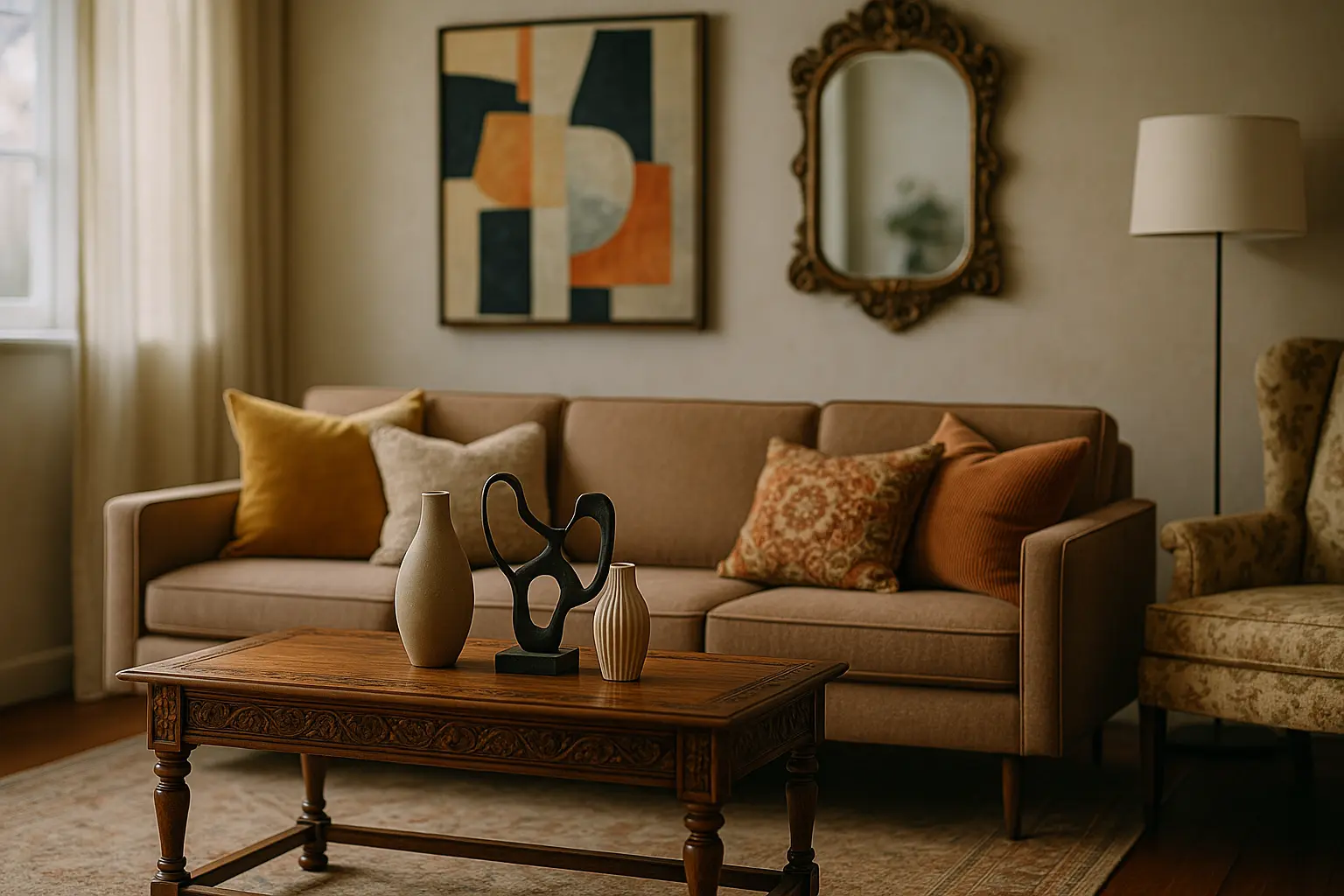Stepping into a space where vintage and modern designs meld can feel like being transported to a realm where history coexists harmoniously with the present. As we dance between the eras, the juxtaposition of antique grace and contemporary flair creates a canvas that’s both nostalgic and refreshingly avant-garde. In this age where minimalism often rules, the subtle integration of vintage pieces adds character and depth, transforming any room into a conversation starter. Let’s explore the art of weaving historical charm into today’s interiors while maintaining modern sensibilities.
Bridging the Era Gap: The Essentials
As we embark on this journey, the first step is to understand the nature of both vintage and modern aesthetics. While the modern design often emphasizes clean lines and minimalism, vintage decor brings with it a rich history, intricate details, and a touch of nostalgia. Vintage items possess a unique charm, reminding us of stories untold and eras bygone. Our task is to embrace these stories and integrate them seamlessly into our contemporary spaces.
Creating a Cohesive Design
To craft a cohesive design, begin by identifying a common thread. This could be a color palette or a recurring material like wood or metal. Using these as anchoring elements ensures that both modern and vintage pieces coexist without clashing. Imagine a sleek, modern table paired with intricately carved antique chairs. The key is subtlety and balance, allowing each piece to shine in its own right.
Selecting the Right Pieces
Incorporating vintage items doesn’t mean overcrowding the room. Instead, focus on select pieces that stand out — a vintage lamp to cast a warm glow in your living room, or a worn leather chair that whispers tales of the past. Adorn your space with items that speak to you, allowing the charm of old-world craftsmanship to resonate in every corner.
The Power of Textures and Colors
Textures and colors play an essential role in blending vintage and modern elements. The interplay of smooth, polished surfaces with rough, worn finishes can create a tactile journey through time. Imagine the juxtaposition of a sleek marble countertop with a distressed wooden table; the contrast is as aesthetically pleasing as it is intriguing.
Embracing Contrasts
Our modern interiors often feature monochromatic schemes, making contrasting textures a delightful surprise. Consider a room painted in soft, neutral tones. Here, a vibrant vintage rug or a striking antique vase can add just the right amount of character without overwhelming the space. Color becomes a tool to create harmony, with pops of color from vintage pieces serving as focal points.
Layering for Depth
Layering different textures can add depth and richness to any room. Mix and match throw pillows in varied fabrics, place a velvet vintage chair against a sleek glass table, or hang delicate lace curtains to soften a minimalist room. These layers create a narrative, inviting viewers to explore the story woven into the fabric of the space.
Curating a Personal Gallery
In our quest to integrate vintage and modern design, the importance of personalization cannot be overstated. Each piece we choose to incorporate should reflect our personality and taste, turning our living spaces into galleries that tell our unique stories.
Personal Touches
Adding personal touches can transform a room. A vintage trunk passed down through generations can serve as a coffee table, or framed family photos from yesteryears can adorn the walls, bridging the gap between the past and present. These elements not only enhance the decor but also bring a sense of warmth and belonging.
The Art of Display
Displaying vintage items effectively requires a keen eye for placement and balance. A well-placed vintage clock on a mantelpiece or a mid-century modern lamp on a sleek console can act as focal points, drawing the eye and stirring curiosity. Arrange items thoughtfully, allowing each to claim its space without competing for attention.
As we conclude this exploration, it’s clear that the fusion of vintage and modern decor is an art form that invites endless creativity. By carefully selecting pieces that hold personal significance and balancing textures and colors, we can transform our spaces into timeless sanctuaries where the past and present echo in harmony. This dance between eras not only adds depth and character to our homes but also creates a living tribute to the art of design and the stories we choose to tell.
FAQ
What is the best way to start incorporating vintage items into a modern home?
Begin with small decorative accents like vintage picture frames, mirrors, or vases. These items can add character without overwhelming your space.
How can I blend vintage furniture with contemporary pieces?
To achieve a harmonious look, balance proportions and colors. Pair vintage furniture with modern elements that share similar tones or textures to create a cohesive design.
Are there any specific vintage styles that work well with modern decor?
Mid-century modern and art deco styles often blend seamlessly with contemporary decor due to their clean lines and timeless appeal.
How can I ensure that my vintage pieces remain the focal point of a room?
Strategically place vintage items in areas where they can be easily noticed, such as on a mantelpiece or as a centerpiece. Keep surrounding decor simple to let the vintage piece stand out.
What are some common mistakes to avoid when decorating with vintage items?
Avoid over-cluttering your space with too many vintage items. Instead, select a few key pieces to highlight. Also, ensure that vintage items are in good condition or have been restored appropriately to maintain their charm.


